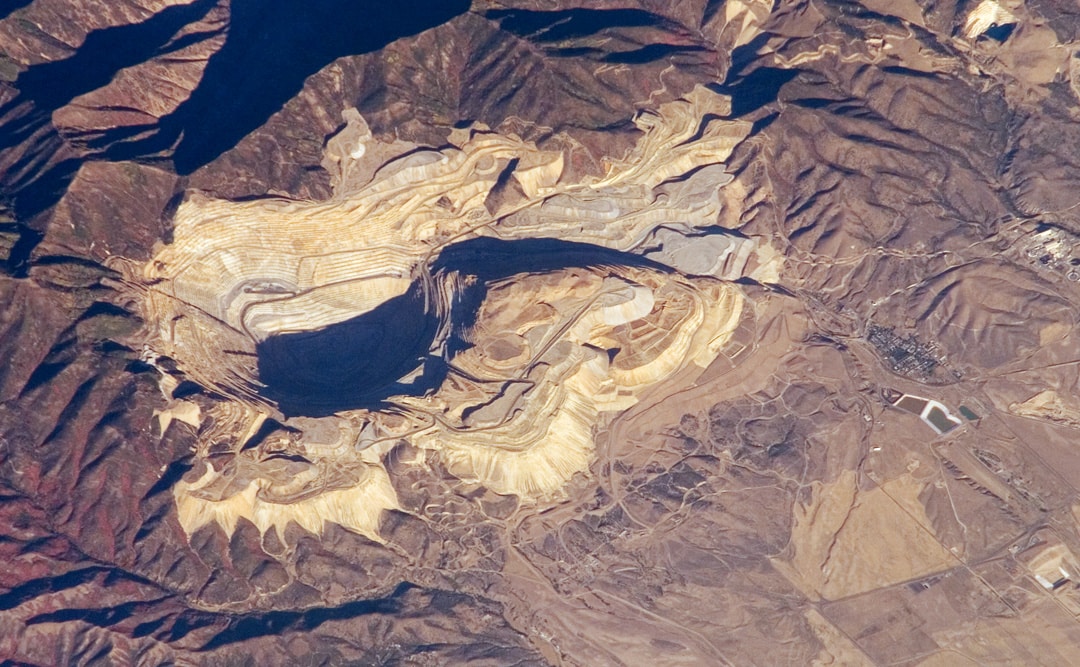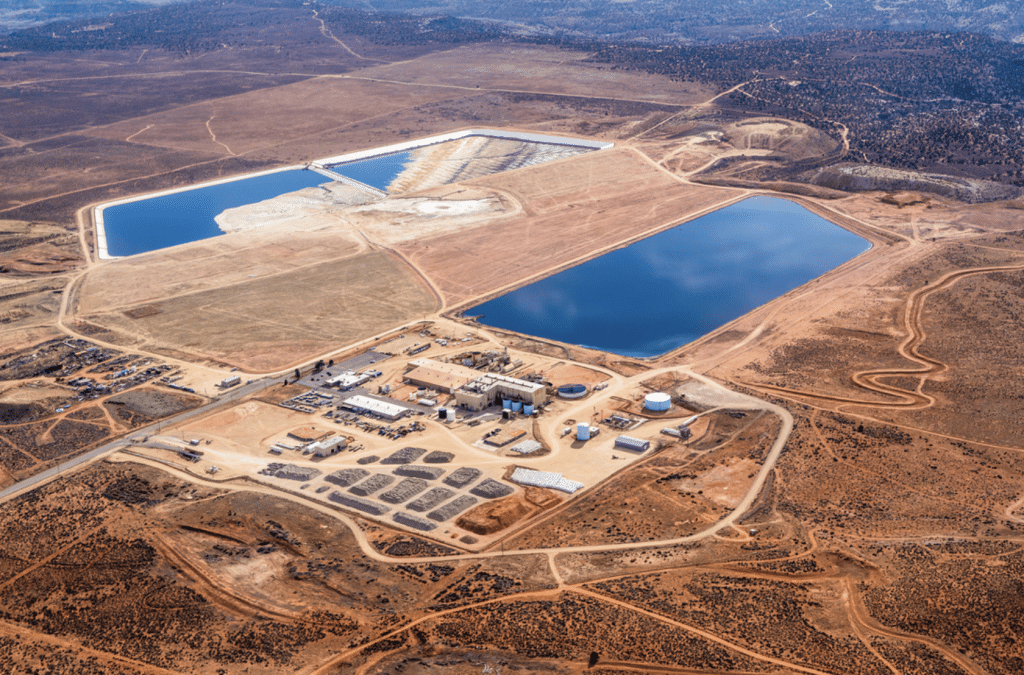Report highlights dirty legacy of mining in the West


Extractive industries like oil and gas, and mining have essentially worked under the same legal and regulatory framework for more than 100 years. That has left a toxic legacy that is still being felt to this day.
Rachael Hamby is the policy director for the Center for Western Priorities, a conservation advocacy nonprofit. This month, the group released a report titled “Backyard Problems: The Toxic Legacy of Extractive Industries in the West.” Hamby recently spoke with Sierra Nevada Ally Executive Editor Noah Glick about the report and what we can learn from it.
Sierra Nevada Ally: Before we get into the report, can we just set the stage a little bit as to some of the policies over time that have regulated the extractive industries and where are we today?
Rachael Hamby: There are two main categories of extractive activity that we looked at and the policies that govern those. One is hard rock mining, which is still governed by the General Mining Law of 1872. The other is oil and gas development, which is still governed by the Mineral Leasing Act of 1920, though it is important to note that several the provisions of the Mineral Leasing Act were just updated a year ago by the Inflation Reduction Act, which passed in 2022.
So, we’ve got two frameworks that are both over 100 years old that are essentially governing how these extractive industries work. And these laws were passed before some really landmark environmental laws were passed. So, what’s the impact of that?
I think that’s a really important thing to look at. So, when the general mining law was passed in the several years following the Civil War, the goal was to encourage settlement and development in the Western states, which had newly been added to the country. So, the priority was to encourage people to go out and establish homesteads, and mine and farm, and figure out how to use all the natural resources that were there. And, also to settle those states with, to be quite frank, white European settlers who were coming from the east. So, with that as the goal, those laws were crafted to encourage that.
We hadn’t really seen large scale extractive activity. People were probably not as familiar as we are today with some of the impacts from that type of extraction – whether it’s the water quality impacts, toxins escaping and dust getting into the area, we just didn’t really know all of that yet. And it’s important to keep in mind, too, that this was dudes going out into the hills with, you know, a pick axe and a shovel. It wasn’t mining, or oil and gas drilling, on the scale that we see today with massive ore trucks and all the different earthmoving equipment that we have today, and all the other technology that has drastically accelerated the scope and the scale of modern mining.
So, those laws were put in place with a different set of goals, and based on a completely different set of technology. Those frameworks have really formed the basis of the entire system of staking mining claims and establishing mining rights and drilling rights in the West. That’s kind of the foundation upon which we’re still operating a century later.
We still have a framework where mining and drilling rights are supreme. And then we’ve layered over these environmental safeguards, which try to guide how we do those activities and minimize the impact. But we’re still operating in a system where mining rights, drilling rights, are the foundation and we’re just addressing the symptoms of that activity.
So, you’re saying that essentially, a mining claim is the supreme use of public lands still to this day?
That’s right. So again, as we were putting those laws in place, resource extraction and development was considered the highest and best use of the land. If there was a resource on the land or under the land, our top goal as a nation was to get those resources out. So, to encourage people to take on the risk associated with doing that, they wanted to offer incentives essentially, which would make it easier for miners to secure rights to the minerals. That made mining more appealing and attractive, and helped to counterbalance some of the risks that miners were taking on.

Now I think is a good time to talk about the legacy of what that has meant, when you’ve got this system in place. What has that meant for the West over the last 100+ years?
I think a big part of the problem is that we are still operating now under a system that was designed for what we knew 150 years ago. Over the past 150 years, we have learned a lot more about how ecosystems work, how water quality, air quality, and landscape health are all intertwined, and are impacted by the various activities that we undertake. Mining technology and techniques have advanced drastically over the past 150 years. Oil and gas drilling, you know, we now have fracking, we have horizontal drilling, we have a lot of other technologies and techniques that we use there. And yet, we have not updated our legal and regulatory frameworks to keep up with what those activities look like now.
We continue to prioritize those activities in terms of how we assign rights and how we use the land. We’re just not living in that same world anymore, in terms of what the various demands on the land are, and in terms of what we know about the impacts and how we could address them.
I want to get into the report, because there’s a map that includes some of these areas of mines that still have this legacy of waste or some kind of pollution. What exactly is in the report? What did you look at and what did you find?
We selected about a dozen examples across the West of places where we are still seeing the impact of legacy hardrock mining or drilling, and/or we are seeing how the failure of laws and regulations to keep up with the changing times are impacting communities and landscapes and habitats today. One thing that I think about a lot as I was writing this report is, this is a movie that we have seen before. And in so many cases, we have seen this movie in the same theater. It doesn’t change, it still ends the same way when you watch it again. It still ends the same way when you see it again in the same theater.
For example, in Butte, Montana, we have a legacy mining district from the late 1800s, that is now a massive Superfund site. We have spent decades trying to address the problems, the pollution, the contamination from activity that dates back 100 years. Right next to that, we have an active modern mine, where we can expect a lot of the same impacts. It’s the same digging of an open pit and releasing toxins into the air and the water. The juxtaposition of those two sites, I think really captures what we were getting at with this report, where we see the impacts of historical activity. And, we are still doing that same activity in the same places under the same legal and regulatory frameworks, and then expecting the results to be different.

What is next? You mentioned that last year in the Inflation Reduction Act, there was an update to the Mineral Leasing Act of 1920. Can you tell us what that update was and what are some of the other policies or priorities that you would like to see the government take on?
The Inflation Reduction Act, which was passed in 2022, made a series of honestly long overdue reforms to the federal oil and gas program. The Act increased the royalty rates for onshore oil production. That’s the payments that oil and gas companies make to us, the taxpayers, who own that resource. It raised the minimum bids for onshore oil leasing, it raised the rental rates, it added a fee for expressing interest in parcels for leasing, and it ended non-competitive leasing, which was a system where if a parcel was offered for auction, and it didn’t generate a competitive bid, a company could then come back and buy that lease at a very low rate. All of those practices were eliminated.
Now, the Bureau of Land Management is engaged in a rulemaking process to implement some of the reforms that were made by the Inflation Reduction Act, as well as to update minimum bonding rates for oil and gas operations, which currently are too low to accurately reflect cleanup costs.
The other policy that we’re very interested in is an update to the General Mining Law of 1872. We’ve seen a lot of proposed reforms to this law over the years. Most recently, we’ve seen the Clean Energy Minerals Reform Act (there’s a version introduced in the House by Representative [Raul] Grijalva and a version introduced in the Senate by Senator [Martin] Heinrich). These the two bills are a little bit different, but their framework is very similar. They would treat hardrock mining very similarly to how we treat oil and gas. So, putting in place a leasing system and a royalty rate, similar to what we have currently for oil and gas, setting very clear environmental and reclamation standards, and ensuring the taxpayers get a fair return through a royalty rate, which currently does not exist for hardrock mining.
Those bills, I think, would be a great start towards updating that law for modern times.
Editor’s Note: This interview has been edited slightly for length and clarity.